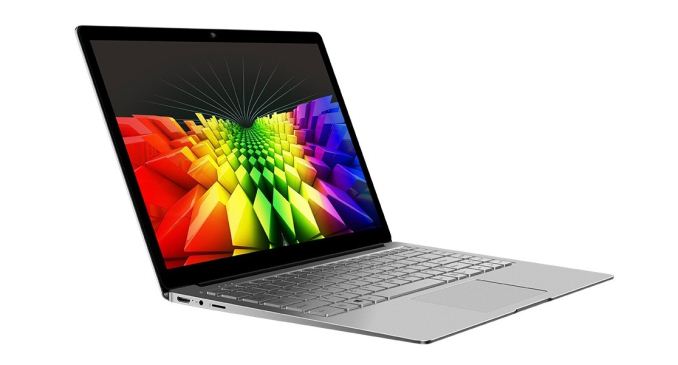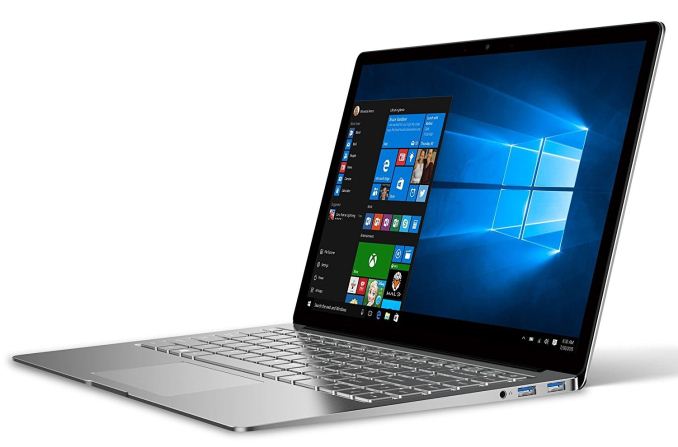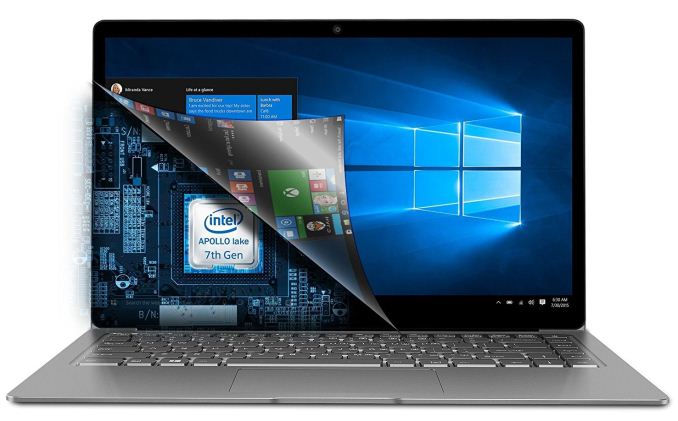Chuwi Announces The LapBook Air: For Preorder Now
by Brett Howse on September 25, 2017 8:00 AM EST
Although they are a relatively small company, Chuwi has been impressing me with low cost-notebooks, that don’t have all of the normal drawbacks of low-cost notebooks. That isn’t the case across their entire lineup, but the LapBook 14.1, and the LapBook 12.3, are both great devices in their class, and are easy to recommend. Chuwi is now trying climb the price ladder a bit with their latest LapBook Air, which is available for preorder now for $430 USD.
The latest LapBook is both thinner, and lighter, than previous models. The new 14-inch notebook is a thin design that Chuwi has stated to me to be 6mm. That’s likely the thinnest point though. The laptop weighs 1.3 kg, or 2.87 lbs, which is pretty light for a 14-inch laptop. It’s also completely made out of aluminum, so it should feel pretty nice to use.
Chuwi has stuck with the same platform they are using in most of their recent LapBook models, which is the Intel Celeron N3450. This is an Atom based CPU, with four cores, and up to 2.2 GHz frequency. It’s based on the latest Atom, which is Goldmont (not Glodmont as Chuwi has in their images) and our reviews of it show that it can make for a laptop that can easily handle day to day tasks.
Chuwi has increased the RAM in the LapBook Air, compared to their other models, to 8 GB, and they’ve also doubled the storage from the 64 GB in other LapBook models, to 128 GB, which they are calling an SSD. I hope that’s the case, because everything else they ship is eMMC. Regardless, 128 GB is a reasonable amount for a low-end system, and should be adequate for most people. If you do need more space, there’s a M.2 2242 slot on the bottom which can handle a SATA SSD, and there’s a micro SD slot as well.
Chuwi is touting the display calibre on the LapBook Air. The IPS display is 1920x1080, and is rated for 320 nits of brightness, which isn’t amazing but should be ok for most use cases. It’s a matte texture, which will please some people and annoy others. The display also features thin bezels, much like the LapBook 14.1.
Chuwi has finally added keyboard backlighting as well, which has always been missing in their less expensive models. Hopefully they’ve fixed their terrible trackpad as well, but we’ll have to see when we get our hands on this device.
As a news pipeline, it’s likely not the time or place to discuss Chuwi as a brand, but here are two thoughts. First, they need to stop trying to steal other brands names if they ever want to be taken seriously. Second, if they are going to keep creeping up the price of their LapBook models, the Atom platform isn’t going to cut it for much longer. At $430, it’s already getting to the point where it’s hard to find an Atom powered Celeron acceptable.
No, the CPU isn't behind the display
Still, it’s nice to see them improving their products. The LapBook Air looks like a nice device, and I’m excited to check it out. Where they’ve made their mark though is the low end of the market, and it was ripe for someone to come along and offer a good device for the money. Once they get up into higher price brackets, the competition gets a lot tougher.
Source: Chuwi












25 Comments
View All Comments
peevee - Monday, September 25, 2017 - link
"The display also features thin bezels"Well, it is clear from the pics that the bezels are not thin.
MamiyaOtaru - Monday, September 25, 2017 - link
compared to an XPS13, no. Compared to a Razer Blade, or a Macbook Air or a year old Zenbook? yeah. Your post is a reflection of our changing expectations for bezelspeevee - Monday, September 25, 2017 - link
Let's say the bezels are medium by modern standards. Not especially large, but not thin either.peevee - Monday, September 25, 2017 - link
And no, it is not just XPS13 and 15, have a look at the ASUS B9440 and Lenovo X1 for examples. No, this one is very obviously not in the same class.BTW, anybody knows what is their problem in making thin bezels with back-illuminated LCDs? Just marketing, trying to make their screens look bigger than they really are (when turned off), or something else?
abrowne1993 - Monday, September 25, 2017 - link
Smaller bezels = smaller chassis unless you increase the screen size. So less room for everything, not just the screen.peevee - Monday, September 25, 2017 - link
That should not be a problem on 14", given they have basically the same internals as a bunch of 11-12" laptops. Especially with Atoms which don't need much cooling. Their SSD fits into MicroSD these days. All the RAM would fit into 4 small multi-chip packages. CPU is small. All of that can fit into a cellphone (and does).lmcd - Tuesday, September 26, 2017 - link
From where I'm from this level of activity on a tiny detail is called a "crusade."Hurr Durr - Monday, September 25, 2017 - link
Looks pretty thin compared to my HP 430 G4.Brett Howse - Tuesday, September 26, 2017 - link
You have a pretty crazy definition of thin bezels then. The XPS 13 is 5.2mm, and this is only 7mm. Plus there's enough at the top to put the camera in the right location.I love the XPS 13, but this is also thin bezels.
MarcusSt - Tuesday, September 26, 2017 - link
... agreed... I think the correct language would be thinNER bezels.... still not as bad as the absolute of calling the iPhone X Edge to Edge when it clearly isn't.